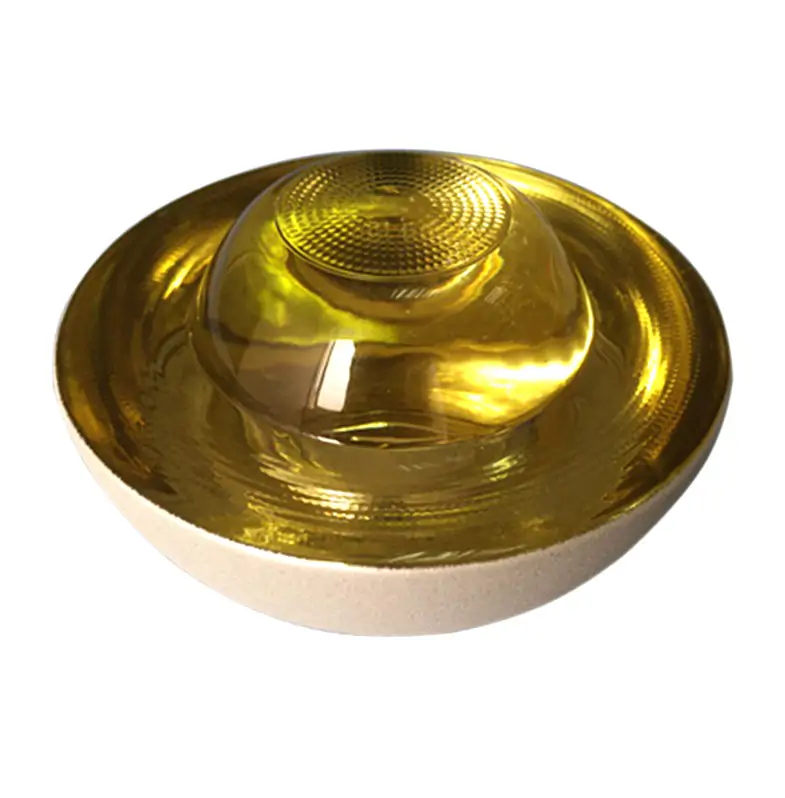Reflective studs, commonly used in road markings, are typically made from durable materials designed to withstand harsh outdoor conditions while maintaining reflective properties.
The materials commonly used include:
Ceramic:
- Ceramic-Based Studs: Ceramic materials offer durability and resistance to weathering, ensuring longevity in outdoor settings.
Plastic:
- Thermoplastics: High-impact thermoplastics are often used for their resilience and ability to maintain reflective properties.
Metal:
- Aluminum or Stainless Steel: Some studs use metal components, such as aluminum or stainless steel, for enhanced durability and longevity.
Glass:
- Reflective Glass Beads: Glass beads or microprisms are embedded in the studs for their reflective properties, enhancing visibility.
Composite Materials:
- Reinforced Composites: Studs made from reinforced composite materials combine strength with reflective capabilities.
Polycarbonate:
- Impact-Resistant Polycarbonate: Polycarbonate materials offer impact resistance and weather durability, ideal for outdoor use.
Acrylics:
- Acrylic-Based Studs: Acrylics are used for their weather-resistant properties and ability to maintain reflectivity.
Epoxy Resins:
- Epoxy-Based Studs: Some studs use epoxy resins for their adhesive properties and resilience to environmental conditions.
These materials are selected for their ability to retain reflective properties, China reflective studs withstand environmental factors (such as UV exposure, moisture, and temperature fluctuations), and maintain visibility to improve road safety and navigation.
What role do reflective studs play in construction zones?
Reflective studs in construction zones serve multiple purposes:
Traffic Guidance:
- Lane Marking: Studs delineate lanes, guiding drivers through temporary or shifting traffic patterns in construction areas.
Visibility Enhancement:
- Improved Visibility: Reflective studs increase visibility, especially in low-light conditions or during nighttime, alerting drivers to changes in road layout.
Hazard Identification:
- Warning Indicators: They signal potential hazards or changes in road conditions, preventing accidents or collisions.
Lane Delineation:
- Lane Separation: Studs help separate lanes, preventing lane drift and ensuring drivers stay within designated areas.
Temporary Marking:
- Temporary Boundaries: These studs create temporary boundaries, guiding traffic away from construction work zones or obstacles.
Traffic Flow Management:
- Managing Traffic: Studs assist in managing traffic flow, ensuring smoother movement through construction areas and reducing congestion.
Safety Measures:
- Enhanced Safety: By providing clear guidance, studs contribute to overall road safety, preventing confusion among drivers.
Compliance with Regulations:
- Meeting Standards: Reflective studs adhere to traffic safety regulations, ensuring proper traffic control within construction zones.
Real-Time Visibility:
- 24/7 Visibility: Their reflective properties ensure continuous visibility, facilitating safer navigation even at night or in adverse weather.
Warning of Changing Conditions:
- Indicating Changes: Studs warn drivers of changing road conditions, prompting them to adjust speed or driving behavior accordingly.
Reflective studs in construction zones act as crucial visual markers, aiding traffic management, enhancing visibility, and ensuring safer navigation through temporary or changing road conditions.
